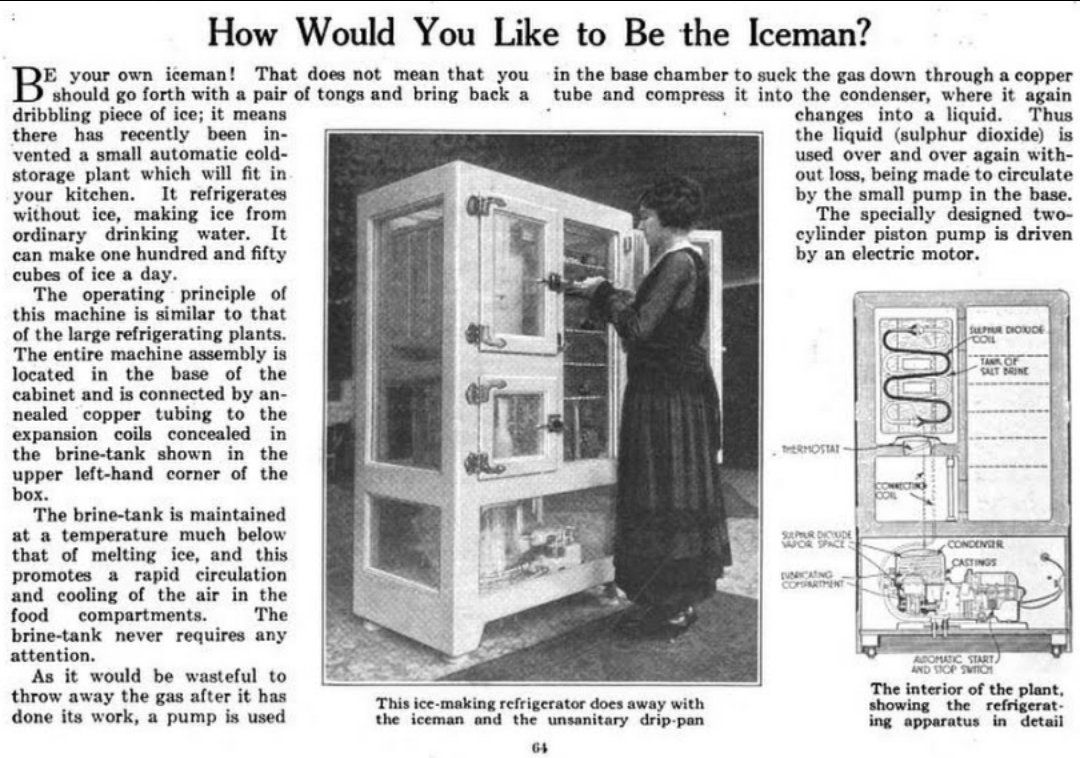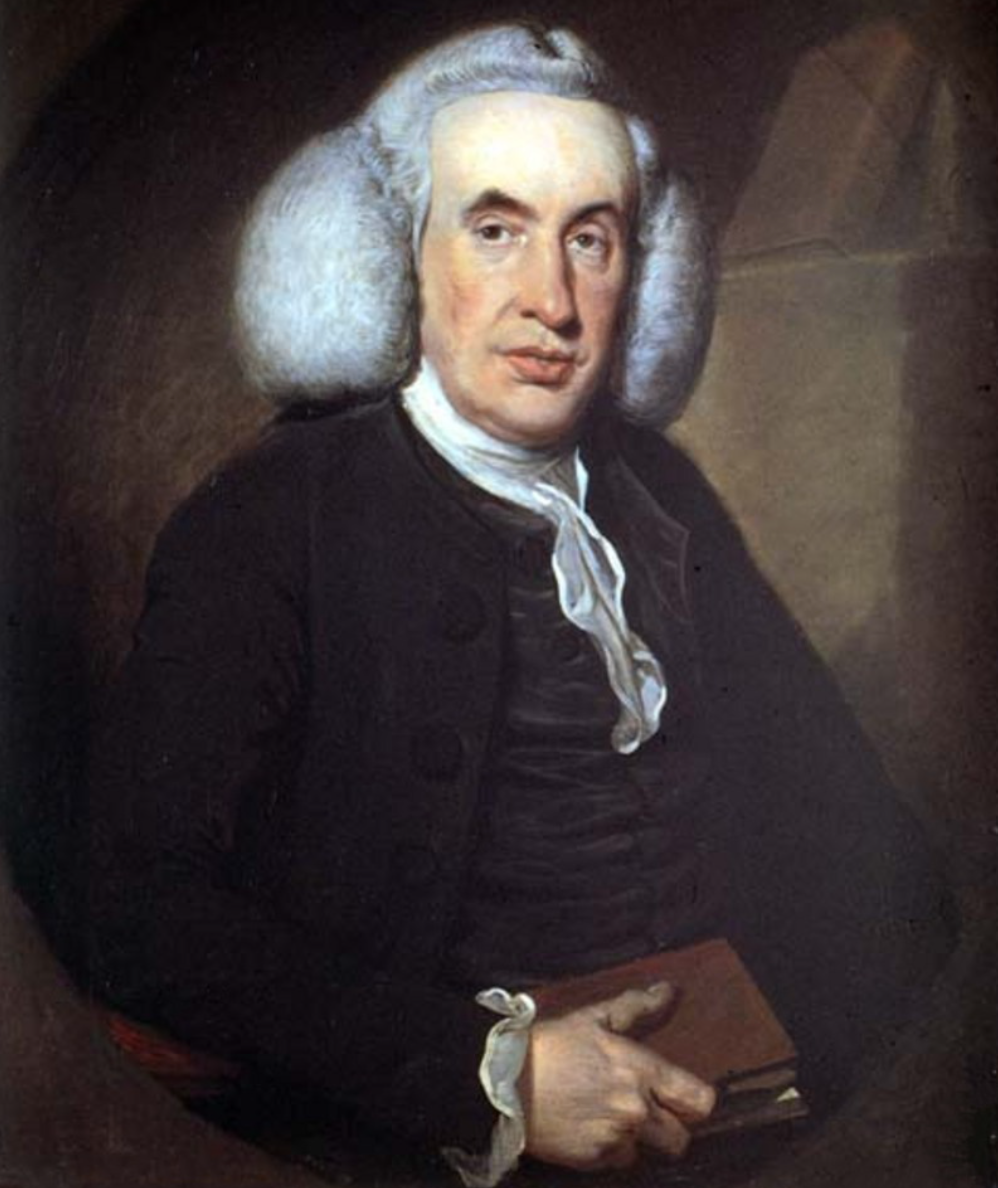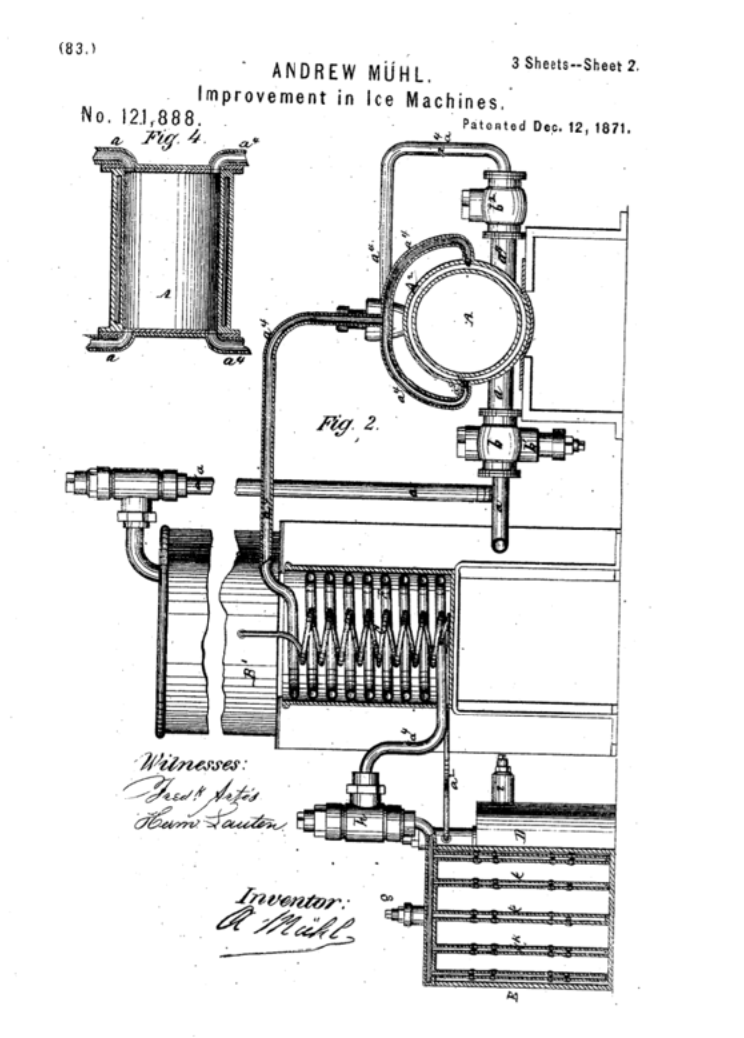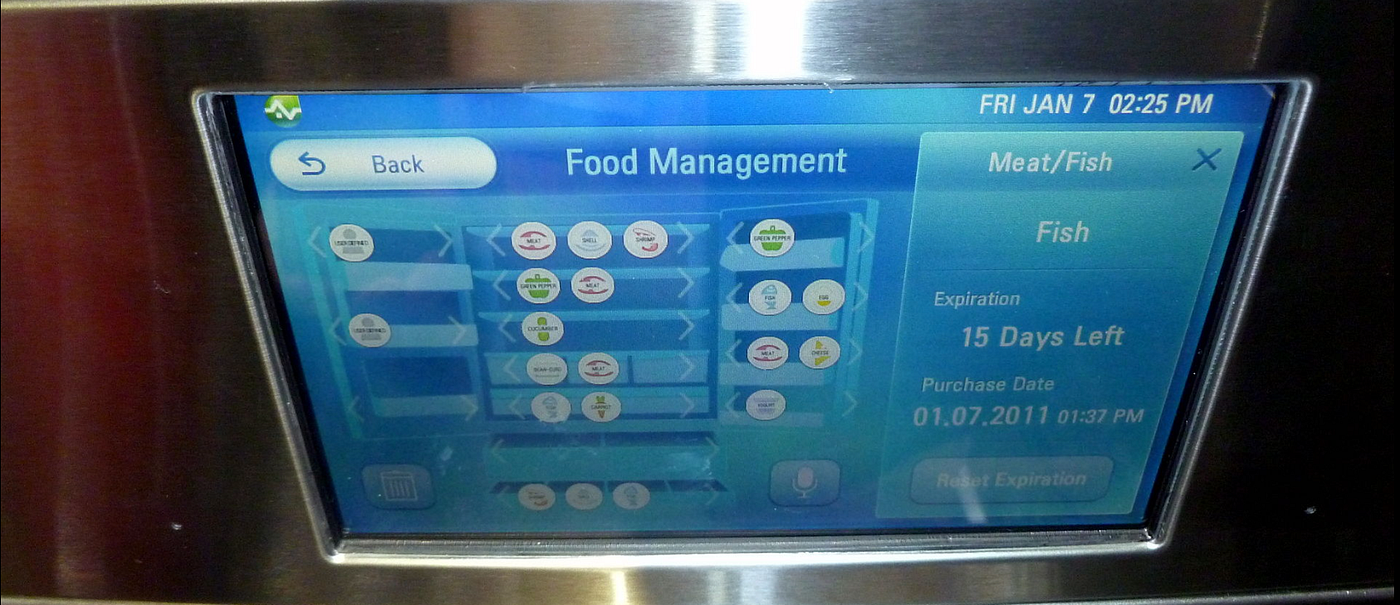What The Tech?! Refrigeration
Industrial cooling helped change the way we store and transport food
In a world with uber eats, imported fruit and the ability to eat things that are out of season, it’s easy to forget some of the infrastructure that’s essential for allowing this to occur. There is cargo ships for moving large quantities of product, as well as air, road and rail transportation to help products get to their end destination in a timely fashion with minimal damage. And, when our well travelled produce isn’t in transit, it’s able to be safely warehoused over an extended period of time with minimal damage.
None of this could occur in the way it does without access to refrigeration and because of this, it’s fair to say that it’s the quiet achiever in helping to achieve our agricultural and storage goals. Let’s take a look! Be your own iceman! It was a different time. Source: Wikipedia
Be your own iceman! It was a different time. Source: Wikipedia
The Beginnings
While today's systems are packed with tech and optimised for efficiency, the first steps toward refrigeration took place well before the industrial era of electronics. It was 1748 when Scottish scientist William Cullen carried out his first experiments that would focus on the concept of cooling and heat exchange. Creating a vacuum over a container of diethyl ether caused it to boil, taking in heat from the atmosphere and proving that the theory had merit. William Cullen’s work was essential in helping discover the concept. Source: Wikipedia.
William Cullen’s work was essential in helping discover the concept. Source: Wikipedia.
Over 50 years later in 1805, American Inventor Oliver Evans would design a workable concept that used the same vapour concept to provide cooling, however, this was never built and remained a theoretical design only. It would be another 3 decades before a patent was lodged and the concept would start to receive general mainstream acceptance. These early designs would differ in some ways from the modern refrigeration techniques we currently use however despite this, many of the fundamental concepts of the design would remain the same.
Unlike a lot of other technologies though, refrigeration in the early days was thought to have little consumer value and was researched for commercial and industrial scenarios only. It would take some time before the concept of refrigerators would properly hit the consumer market.
Refinement & Expansion
While previous cooling techniques like ice cooling were hard to scale effectively, refrigeration offered much in the way of productivity and reliability benefits which would come into a rapidly expanding and industrializing market. Because of this, commercial food and beverage producers were some of the first beneficiaries of the new technology, using it to store and transport their products, reducing waste and loss.
It was also realised early that refrigeration didn't have to replace ice cooling entirely, as with industrial cooling systems ice was able to be produced in large quantities. This meant that it was available for transportation purposes and it would open up new opportunities for transporting products that weren’t able to be reliably moved before. Seafood was the main benefactor here and commercial fish markets would no longer need to rely on ice storage and dried processing to move products inland. With this said, the first commercial ice machine would enter service in Australia in 1851, for exactly this purpose. Early icemaker design by Andrew Muhl. Source: Wikipedia
Early icemaker design by Andrew Muhl. Source: Wikipedia
While the general concept of a refrigerator changed little during this time, behind the scenes there were rapid changes and developments in refrigerants, the heart of any refrigeration system. Many early systems would use Ammonia or Sulfur Dioxide to help achieve cooling however while these worked well they were pretty environmentally unfriendly. Eventually, we’d move to Freon gas before modern refrigerants like R134 would evolve to help deal with this issue.
We’d also see the concept of air-conditioning take hold as a consequence of this research, but that's an article for another day. A staple in modern homes. Source: Wikipedia
A staple in modern homes. Source: Wikipedia
Modern World
By the time the 1970s came around, refrigeration was well established in the consumer world and was starting to make inroads into the consumer market as well. Modern refinements had done much to assist with efficiency and reducing environmental damage however despite this during the 70s and 80’s there was intense controversy over the role refrigeration had played in environmental damage.
With humans changing their attitudes around how they treated the environment, and focus groups targeting aerosol products and refrigerants we’d see even more refinement, not only in the systems but also in the way that they were serviced and disposed of. While it wouldn’t stop environmental damage outright it would help to reduce the impact that the industry had.
The biggest evolution in refrigeration in the modern era has come with a pretty controversial take. Namely, the concept of IOT and smart devices. With nearly every product in the modern home capable of being network enabled in the name of features and convenience, this has sparked some intense discussions around security and the need for doing so.
These arguments aside though, modern smart fridges offer features and convenience that were simply unheard of just one or two decades ago. What’s your perspective on smart devices being connected to the internet in a default configuration?
Final Words
Sometimes, in just a few thousand words it can be hard to grasp the impact a piece of technology has had in the modern world. It’s fair to say that Refrigeration is one of these inventions.
Having refrigeration in the home makes it easy to come to terms with how convenient it can be, but it’s in the logistical arena that it really shines and the proliferation of infrastructure that provides mobile refrigeration helps to prove that point.
It allows us to store warehouses of fruit without damage, helping to weather periods of limited production as well as send our food products to all ends of the earth.
Seafood can be snap-frozen at sea and sent via planes, trains and road transport in refrigerated units, meaning that you don’t have to be by the seaside to enjoy seafood anymore.
And ice can be produced in a scale and quantity that allows it to be used for medical purposes, helping to safely transport blood and other essential medical stores without the risk of spoilage.
A pretty essential piece of infrastructure, wouldn’t you say?
What the Tech?! is our recurring, twice-monthly piece that focuses on the technology that helped shape our modern world.
If you found this article insightful, informative, or entertaining, we kindly encourage you to show your support. Clapping for this article not only lets the author know that their work is appreciated but also helps boost its visibility to others who might benefit from it.
🌟 Enjoyed this article? Join the community! 🌟
📢 Join our OSINT Telegram channel for exclusive updates or
📢 Follow our crypto Telegram for the latest giveaways
🐦 Follow us on Twitter and
🟦 We’re now on Bluesky!
🔗 Articles we think you’ll like:
- What The Tech?! Rocket Engines
- OSINT Investigators Guide to Self Care & Resilience
✉️ Want more content like this? Sign up for email updates























































